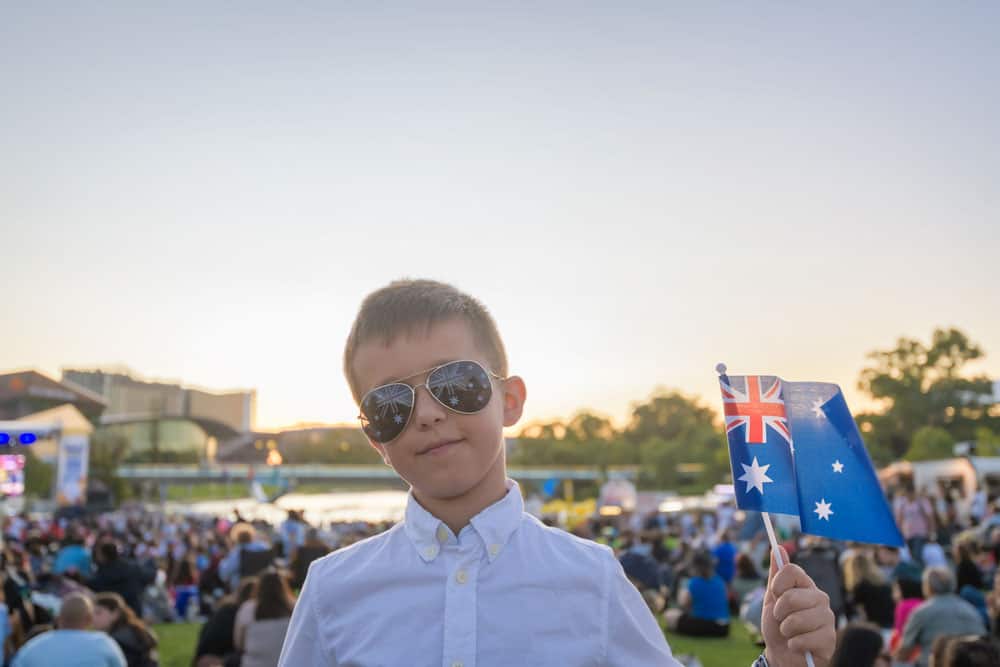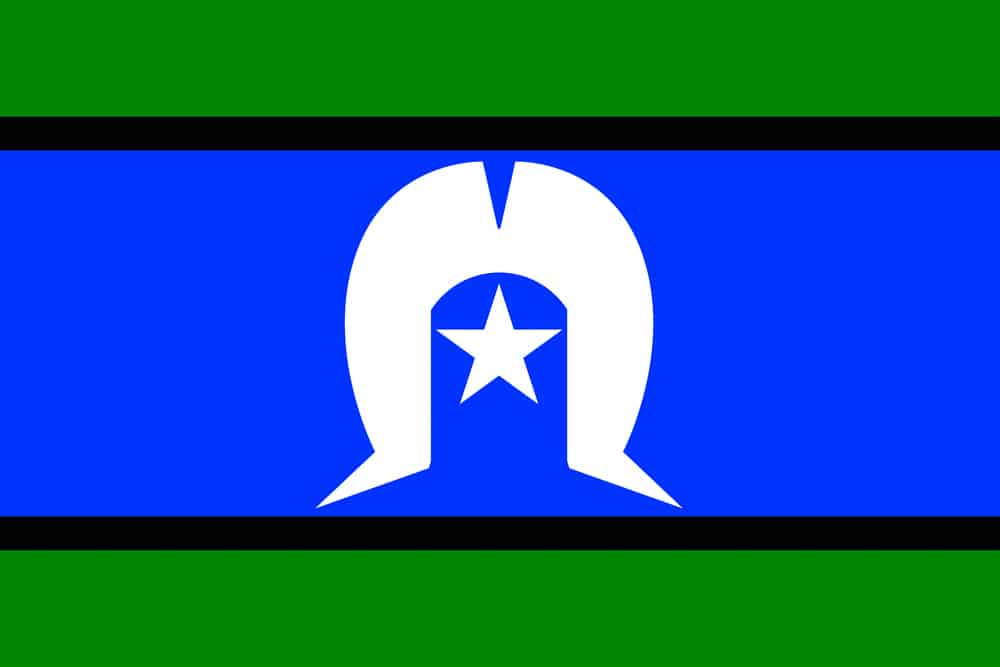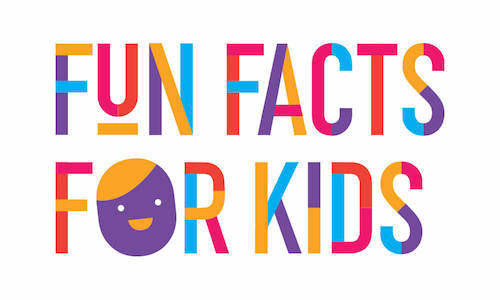The National Day of Australia is known as Australia Day. Australia Day is celebrated annually on 26th January to mark the arrival of the First Fleet – an iconic date in Australia’s history. If you’re doing a school project, these Australia Day facts for kids are just what you’re looking for!
Australia fun facts for kids
These facts about Australia Day for kids will tell you everything you need to know.
- Australia Day commemorates the date that Captain Arthur Phillip landed at Sydney Cove, New South Wales, the land of the Eora people. This led to the establishment of the European settlement in Australia.
- The First Fleet actually landed in Botany Bay on 18th January, but this site was deemed unsuitable so they continued on and raised the flag in Sydney Cove instead.
- Australia Day is a major public holiday in Australia. It’s a chance to celebrate all that is amazing about Australia.
- Australia Day is celebrated through a wide range of special Australia Day events including fireworks, festivals, community BBQs, concerts and citizenship ceremonies.
Australia Day fun facts
Did you know that Australia Day hasn’t always been celebrated on 26th January? And it wasn’t always called Australia Day either!
‘First Landing Day’ or ‘Foundation Day’ celebrated the arrival of Captain Arthur Phillip in Sydney on January 26, 1788. It was a localised celebration for New South Wales that took place annually. In 1818, Governor Lachlan Macquarie created an official public holiday in New South Wales.
During this time, other newly-founded colonies began celebrating their own beginnings through special events.
‘Australia Day’ was adopted as a day of celebration in 1915, and the special date chosen for the occasion was 30th July.
By 1935, all Australian states were marking Australia Day and the date of the celebration reverted back to 26th January.
Australia Day finally became an official national public holiday for all states and territories in 1994.
As Australia Day is a national public holiday, kids get the day off school and many businesses close for the day so that everybody can celebrate the special Australia celebrations.
Australia Day for kids: Australia Day or Invasion Day?

Protests began about celebrating 26th January as Australia Day as far back as 1938, when approximately 100 Aboriginal protestors gathered to present their views.
Over the last few years, more and more people have been discussing whether it’s fair to celebrate Australia Day on 26th January. Lots of people would like the date of the Australia Day celebrations to be changed. The reason for this is because life became very difficult for Australia’s Indigenous people when European settlers arrived and it marked the beginning of a period of terrible bloodshed.
When the First Fleet landed, it started a very difficult time for Indigenous Australians that continues to this day. Many Indigenous Australians see the 26th January as a date of mourning for all that was lost and for the violence that followed. For this reason, some people refer to Australia Day as ‘Invasion Day’ or Survival Day’.
While the world is now a very different place, the effects of colonialism are still felt today with many Indigenous Australians experiencing high rates of poverty, ill-health, and social inequality.
It is believed by some that changing the date of Australia Day will show respect for Indigenous communities and acknowledge the pain and trauma they’ve suffered.
Whether Australia Day’s date gets changed is a matter for public discussion and debate, but everyone agrees Australia deserves a special day to celebrate our amazing country whenever that date might be. For now, though, Australia Day is still celebrated on 26th January every year.
Australia Day celebrations | Modern celebrations
There are a few things that happen every year on Australia Day…
The Australian of the Year is announced on Australia Day Eve as a way to promote citizenship and recognise people who have excelled in worthwhile achievements.
The Australia Day Honours list is also announced to award honours to deserving individuals and groups.
Historically, many councils hold Australian citizenship ceremonies on Australia Day. These tend to be bigger events than the ones that take place at other times of the year. Government policy has just changed to allow councils more flexibility to hold Australia Day citizenship ceremonies on days around Australia’s national day. Many councils have now chosen to hold their citizenship ceremonies on other days as a sign of respect. Before this policy change, councils had to hold citizenship ceremonies on Australia Day itself.
Check out these amazing guides and books about celebrating Australia day here!
Activities for Australia Day: How do people celebrate Australia Day

People celebrate Australia Day in lots of ways.
Popular Australia Day activities include heading to the beach, enjoying a BBQ, playing sports and going along to Australia Day fireworks.
Lots of people dress up for Australia Day, wearing Australia’s colours of green and gold, or proudly adorning Australian flags as a way to show how proud they are to be Australian.
There are often parades, festivals or outdoor events taking place on Australia Day so you can get out and enjoy being part of your local community.
If you’re looking for ideas about things to do on Australia Day, why not spend some time learning about the history of Australia? There is a lot to learn about Australia’s First Peoples, the First Fleet and about how the Commonwealth was formed.
Australia Day facts for kids: proudly Australian
On Australia Day, there are lots of ways to celebrate and show your pride, whether that is waving a flag or singing the Australian National Anthem. Here are some more Australia facts you might find useful…
The Australian flag
The Australian flag has three main components: the Union Jack, representing the country’s British heritage; the Commonwealth Star, representing the federation of Australia’s states and territories; and the Southern Cross, representing Australia’s location in the southern hemisphere.
Aboriginal flag
The Aboriginal flag was designed in 1971 by Harold Thomas and features three colours: black, red, and yellow.
The colours of the flag represent the Aboriginal people of Australia and their connection to the land.
In 1995, the Aboriginal flag was recognised by the Australian Government as an official ‘Flag of Australia.’
Torres Strait Islander flag

The Torres Strait Islander flag symbolises the unity and identity of all Torres Strait Islanders.
The flag features a white Dhari (a traditional headdress), with a five-pointed white star underneath. The Dhari is a symbol of Torres Strait Islanders, and the white star symbolises peace and the navigational importance of stars as well as representing the five languages and cultural groups of the region.
In 1995, the Torres Strait Islander flag was recognised by the Australian Government as an official ‘Flag of Australia.’
The Australia flag, the Aboriginal flag and the Torres Strait Islander flag can be used to show patriotism and you can find all kinds of flag memorabilia to wear, display or wave on Australia Day.
Australia coat of arms
The Australian coat of arms features two native Australian animals: the kangaroo and the emu standing together with a shield which depicts the black swan of Western Australia, the lion and stars of New South Wales, Victoria’s Southern Cross, the Maltese Cross and Crown of Queensland, the walking lion of Tasmania and the piping shrike of South Australia.
Symbols of Australia’s 6 states are woven together into the Coat of Arms with a kangaroo and an emu standing on either side of the central shield. The Commonwealth Star appears in gold at the top of the Coat of Arms.
The Australian coat of arms is an important symbol of Australia.
Australia National Anthem
The Australian National Anthem is called Advance Australia Fair. This patriotic song was first performed in 1878 and it became the official National Anthem of Australia in 1974. It’s a song that you will likely hear a lot on Australia Day!
Spruce up your room with these Australia Day decorations!
Australia day information for kids
Australia Day is a date to reflect, respect and celebrate together. We have a lot to be proud of in this beautiful country of ours.
I hope you found this article about Australia Day facts for kids useful!

